
IF YOU STAND IN FRONT OF A LAKE YOU HAVE THE HORIZON AND YOU HAVE THE SHAPES ABOVE AND THE SHAPES REFLECTED IN THE WATER IF THE AREA BELOW THE HORIZON IS JUST REALITY REFLECTED IN THE WATER
— Louise Bourgeois

IF YOU STAND IN FRONT OF A LAKE YOU HAVE THE HORIZON AND YOU HAVE THE SHAPES ABOVE AND THE SHAPES REFLECTED IN THE WATER IF THE AREA BELOW THE HORIZON IS JUST REALITY REFLECTED IN THE WATER
— Louise Bourgeois

Greenpeace worker Lindsey Allen walks past a pool of oil as she collects samples of oil that washed up along the mouth of the Mississippi River south of Venice, La. Wednesday, May 19, 2010. Oil from last month's Deepwater Horizon oil rig explosion in the Gulf of Mexico has started drifting ashore along the Louisiana coast. (AP Photo/Charlie Riedel)
*****
What constitutes a "crime against humanity"? When is an "ecological crime"? not a crime against humanity? These are questions I ask myself when attempting to understand the gravity and consequences of the ongoing Deep Horizon disaster in the Gulf of Mexico, because I am stunned by the absence of discussion of criminal liability for the responsible parties. I know that part of this silence is generated by a lack of established legal frameworks for determining criminal liability in such cases, let alone in actually holding trials and executing judgements.
For those who are curious, like me, crimes against humanity, as defined by the Rome Statute of the International Criminal Court Explanatory Memorandum,
are particularly odious offences in that they constitute a serious attack on human dignity or grave humiliation or a degradation of one or more human beings. They are not isolated or sporadic events, but are part either of a government policy (although the perpetrators need not identify themselves with this policy) or of a wide practice of atrocities tolerated or condoned by a government or a de facto authority. Murder; extermination; torture; rape and political, racial, or religious persecution and other inhumane acts reach the threshold of crimes against humanity only if they are part of a widespread or systematic practice. Isolated inhumane acts of this nature may constitute grave infringements of human rights, or depending on the circumstances, war crimes, but may fall short of falling into the category of crimes under discussion.
The Rome Statute has one paragraph that refers to environmental damages as war crimes: Article 8(2)(b)(iv):
Intentionally launching an attack in the knowledge that such attack will cause incidental loss of life or injury to civilians or damage to civilian objects or widespread, long-term and severe damage to the natural environment which would be clearly excessive in relation to the concrete and direct overall military advantage anticipated;
In a 2001 U.S Army Environmental Policy Report, the authors state that
There are three ways a case may come before the Court: referral by a State Party to the Statute; referral by the UN Security Council; or initiation of an investigation by the Prosecutor of the ICC.
For the court to have jurisdiction, several stringent conditions must be met. The act must be:
- Among “the most serious crimes of concern to the international community as a whole” (Preamble, par. 4, Doc. UN/A/CONF.183/9, 17 July 1998;
- The result of an attack specifically intended to create that damage; “collateral” damage would not come under the Court’s jurisdiction (in the words of one of the interviewees, the Statute “is about war crimes, not mistakes”);
- Launched with the knowledge that it would cause “long-term and severe damage to the natural environment” which would be “clearly excessive” to anticipated military gains; and
- If the above three conditions were met, the principle of “complementarity” would come into play. The ICC will complement national procedures, not replace them. If a country has legal mechanisms to address the crime, and they are functioning properly, the ICC would not have jurisdiction.
- All cases are filtered by a three-judge panel. If a series of frivolous cases flooded the court, they would not pass the panel.
Apparently, many suggestions have been made for the establishment of a specific statute and category for "Enviromental Crimes" to address those most aggregious actions which occurr outside of wartime and whose victims are not considered to be immediately "human". For instance, Mary Clifford proposed a definition of environmental crime in her 1998 book Environmental Crime, as
- A broad philosophical definition: An environmental crime is an act committed with the intent to harm or with a potential to cause harm to ecological and/or biological systems and for the purpose of securing business or personal advantage.
- A practitioners’ definition for a legal framework: An environmental crime is any act that violates an environmental protection statute.
Here's the problem: the rigid distinction between crimes against humanity and environmental crimes (and the relative devaluation of the seriousness of the latter) is absurd. Environments are — in a very tangible and real way — part of what constitutes "humanity" in an individual or group of individuals, and must be considered as such in the constitution of the legal subject. There are established legal dialogues and formulations of the environmental component of cultures (they exist, although they too are still underdeveloped and underrecognized) and yet when it comes to the conception of the "humanity" which is a victim of "crimes against humanity", the undeniable connections of the well-being of human with non-human species, geological and weather conditions with human populations, are ignored — or rather, left out because of their extreme unpopularity with status quo financial and economic international bodies. Is there anybody who lives anywhere near the gulf region who does not feel that the current Deep Horizon disaster constitutes "a serious attack on human dignity or grave humiliation or a degradation"? Is it not abundantly clear that vast numbers of people who live near coastlines that are being developed for off-shore drilling, oil refining and other potentially disastrous scenarios feel that their environmental rights are being degraded?

Despite the fact that environmental protection laws are often put on the books because of their seriousness and the potential effects on humans as well as natural environments and animals — including death in many cases — and despite the fact that it is possible and not uncommon for companies and governments to be held criminally responsible for injuries and deaths of individuals through their infringement of environmental protection laws — there is a massive disconnect between the specific case to the general or systemic which prevents the recognition of the severity and international character of systemic instances of massive environmental damage.

It is true that there are more complicated determinations to be made than others — the factors in determining the parties responsible in climate change and proving their criminality is a massive project (although by no means impossible). But the oil spill in the Gulf is as black and white as they come, if only you actually hold to the letter of the law. Officials within the Obama administration (previous administrations are not exempt, merely not of immediate concern), the EPA, the MMA British Petroleum, Halliburton, Transocean, Chevron, ExxonMobil and other institutions are — without a doubt — guilty of crimes against humanity.

The president and his administration continue to tolerate and condone the systemic practices of massive environmental degradation which kills and injures humans and environments alike. I agree that boycotting BP and other companies makes sense for concerned individuals looking for ways to make a posititve difference in the course of their daily lives. I agree that voting against policies and politicians who support these practices makes sense in the short term. Unfortunately, this is not enough. According to the Institute for Southern Studies, the immediate-to-near term fluctuations in brand loyalty and party politics do not threaten entrenched off-shore oil enonomics:
While the short-term picture for offshore drilling is cloudy, there are few signs that the energy industry intends to move away from offshore drilling -- including deepwater exploration, like that which the Deepwater Horizon rig was conducting before its fateful April 20 explosion.
That's because the offshore drilling industry operates on a different, longer-term cycle than politics. Due to the immense cost and scale of offshore drilling projects, the companies involved operate on multi-year plans and leases, which they have no intention of abandoning after one disaster, even if it is the biggest oil spill in history.
In the short-run, the energy industry is bracing for a series of setbacks: lawsuits, regulations, even temporary drilling bans. For example, on Monday, the Obama administration revealed the details of a six-month moratorium on deepwater drilling (defined as deeper than 500 feet), including some 30 exploratory wells.
But six months is a short time horizon for deepwater offshore drilling projects, which take years to get off the ground. With shallow water drilling showing diminishing returns, the major oil companies view deepwater drilling a fixed part of their future: Deepwater rigs capable of drilling 3,000 or more have increased 43% since 2006.
It is long past the time to consider the implications of not addressing the systemic practices that threaten, harm and kill humans and their environments — not only in protests, boycotts, direct action and democratic referendums — but in the theory and practice of international law.
VOICEsVOICEs is a two piece from Los Angeles, comprised of Jenean Farris and Nico Turner. From their MySpace page: "VOICEsVOICEs create a sempiternal space filled with sounds and imagery that defy what they've been taught, and challenge what you know. A captivating experiment where two drummers, knowing nothing of the machines and instruments they chose to adopt, construct such hauntingly beautiful music, they awaken even your most subconscious dreams and aversions. A sort of existential realization can occur when these two lovely girls envelope you in their rapturous style of melodic, and at times, rough soundscapes."
Dirty Projectors are a Brooklyn-based experimental rock band led by Dave Longstreth. They have released seven full-length albums through 2010. The band currently consists of Longstreth along with Amber Coffman (vocals, guitar), Angel Deradoorian (vocals, keyboard, samples, guitar, bass), Brian McOmber (drums), Nat Baldwin (bass), and Haley Dekle (vocals). This collaboration with David Byrne is from the Red Hot compilation Dark Was The Night.
The Supremes, an American female singing group, were the premier act of Motown Records during the 1960s. This Italian version of "You Can't Hurry Love" comes from the recently reissued double album "Motown Around the World," a collection of Motown's greatest stars struggling to sing classic soul hits in foreign languages.
Molobali Traoré was born on the Niger river in Macina, and a strong defender of the traditions of the Ségou region. Contrary to many artists of her stature she refused to move to the capital Bamako, and instead settled with her husband in Niono. Ironically it was in Bamako where she died of typhoid on September 16, 2009, at the age of only 43. She leaves behind a husband and two children. Although she hardly performed outside of the Niono cercle, she was very popular in the whole of Mali. Her songs were mostly moral, directed at the common Malian. If she was a griot, she was a griot of the common man. The heroes of her songs were farmers, workers of the land.
The Booksare an American music duo, formed in New York City in 1999, consisting of guitarist and vocalist Nick Zammuto and cellist Paul de Jong. Their releases contain a combination of electronic music and folk, typically incorporating samples of obscure sounds and speech. They have released three critically-acclaimed albums on the German label Tomlab, and are currently preparing for the release of their latest studio album, The Way Out.
Gareth Williams was a British musician best remembered as the bassist and vocalist for the experimental rock group This Heat, and his project with Mary Currie, Flaming Tunes. From the Flaming Tunes website: "This was a track made by Gareth during the period after the release of the original FT cassette. Again it is built on a fairly cerebral, even mechanical base, with a repeating arpeggio and a descending figure over 12 bars, but the ease of the melody, the humour in the lyrics and the passion of delivery lift it into being one of his most effective songs."
A new film by Apichatpong Weerasethakul. Winner of the Palme d'Or at the 2010 Cannes Film Festival.
YX is an allegory about cities, bodies, fluid media, privation and loss, in which hermetic spaces create hermetic narratives. Shot in 2007 in Chicago with performances by Evan Scott Rubin and Jeff Harms, production assistance by Sam Wagster, Britt Willey, Matthew Kellard, Chris Vlasses and Lizzy Lynette Vlasses. Music by Vaughan Williams and Paysage d'hiver.
You can also view the full page with stills here.
Six trailers for Socialisme, the director’s submission for the “Un Certain Regard” category at the 2010 Cannes Film Festival.
Her pure nails sprung up exalting their onyx,
Anxiety, this midnight, bearing light, sustains,
In twilight many dreams burnt up by the Phoenix
Whose smoky ashes no sepulchral urn contains
Atop the sideboards, in the empty room: no ptyx,
That voided toy of vibrant nonsense, left inside,
(Because the Master’s gone to draw the tears from Styx
With that exclusive object wherein Naught takes pride.)
In vacant north seen through the casement frames, a gold
May agonize at times, within the setting, to behold
Fire-breathing unicorns arrayed against a nix,
She, lifeless naked mirror image, repetition
Whom in the twinkling framed forgetting, is to fix
Through sparkling timed in septet, composition.
Translated by MX
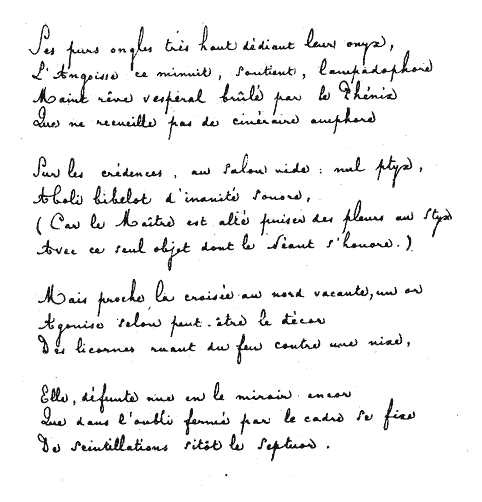
In 2007 I shot ten scenes for a feature length project called The Upper Air, but I was dissapointed with the results and scrapped the project. I've decided to re-edit the scenes into a short entitled yx, which will hopefully be finished next month. The themes and concept are very much the same as the original project: the privitization of resources and of bodies, the translation of hermetic spaces into hermetic narratives, allegories of ecologies in crisis. The new title comes from Stéphane Mallarmé's poem, Sonnet en -yx. The video has performances by Jeff Harms and Evan Rubin, and Sam Wagster was an immense help in the production. Below are some stills from the edit in progress.




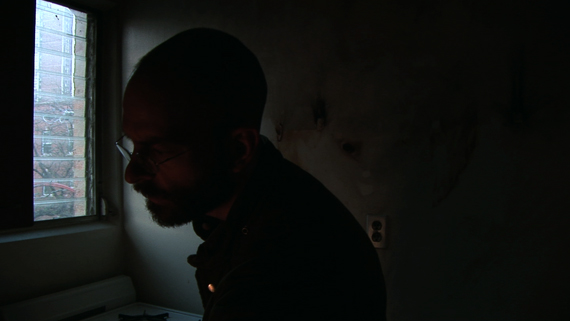

 Max Ernst, Epiphany (1940)
Max Ernst, Epiphany (1940)
Whenever desire climbs a tree, internal repercussions trip it up and it falls to its death; the rhizome, on the other hand, acts on desire by external, productive outgrowths. That is why it is so important to try the other, reverse but non-symmetrical, operation. Plug the tracings back into the map, connect the roots or trees back up with a rhizome.
Gilles Deleuze and Félix Guattari, A thousand plateaus: capitalism and schizophrenia.
An emergent thought:
The recognition of the illusion of economic growth is a symptom of a crisis — a self-betrayal of the materiality of capital in the grain-become-visible in the tightly stretched membrane. Crisis relocates idealist and utopian strategies from the hypothetical and fantastic to within the possible, pragmatic and even necessary. It brings the holistic and broad to bear upon the specific, and the local — global ecology becomes tangibly present in everyday negotiations of individuals and small communities. Unexpected regions of the metaphysical materialize as we are forced to perceive the interconnectedness of living beings and the power of cosmologies to inform, motivate and direct human behavior. The neurotic visions of post-apocalypse projected by the philosophies of growth, industry and economic disparity reveal their attractive democratic foundations, the leveling of qualities of life and the rationality becomes evident in post-industrial models. Intrinsic rights of the individual cannot be argued to be dependent upon individualist goals, and it becomes urgently necessary and unavoidable to conceive of communal organizational structures which function as part of a whole. It becomes undeniable that our belief in a better possible future, so necessary to undertake the difficult work of reaching it, is part of a long, intertwining and diverse lineage of holistic beliefs that have always existed and been valuable, yet were not always recognized outside of the codified boundaries of official culture. Essentially, to instrumentalize belief, we assume an analytical (extra-dimensional) vantage, creating in the zone of the singularity — the space in which belief is transformed into objective forces by “necessity” — a probability map of possible positions and trajectories.
I have a sense that we need to, in communities of natural human scale, carefully and analytically revive the historical records of cultural ecologies — the materially conjoined structures of human organization and natural environments — with projected relevance in inverse proportion to their proximity to the epicenters of empires. We have firmly entered the borderlands — the frontline of the conflict between programmatic expansionism and the indigenous, the genesis of synthetic cultures that from the inside appeared occult and mystical and which, in the analytical revival is revealed to be programmed by holistic mythologies. Here and now we will reconfigure the historical syntheses of nomadic federations and city-states. The border is still being pushed outward, but when we look toward the future-past, we can begin to re-imagine practices of ecological existence and experience — formerly maligned as “primitive” and “superstitious” — as praxises arisen from sound, resonant and beautiful theory. Such an analytical retracing becomes a novel progression, taking what once came after with us into what once came before.
Perhaps this precludes an inversion of the deepest sense of deterritorialization. Perhaps this prefigures a recorporation of the imaginary body.


Your making things explicit, 2009. Installation by Olafur Eliasson.
Dario Robleto was born in 1972 in San Antonio, Texas; he lives and works in San Antonio. In his sculptures, Robleto uses rare and archaic materials, including vinyl records, dinosaur fossils, and impact glass formed by meteorites or nuclear explosions. Taking his cue from disc jockeys' music sampling, Robleto refers to history, memory, nostalgia, chance, and hope in order to understand the present. Sampling is a method of composing something new from existing sources in a nonlinear manner. To Robleto, this is a philosophy rooted in American history, rather than just a technique. His sculptures originate from his extensive research around an event, which eventually brings him to identify specifically evocative materials and forms. While his earlier work focused mostly on the history of rock and pop music and its relationship to official history and our personal lives, much of Robleto's more recent work references the experience of war, raising such questions as "who is the enemy?" (Scope).

A Homeopathic Treatment For Human Longing, 2008
Glass vials, vintage glass electrode wands, 19th c. bloodletting cupping glass, various home made homeopathic remedies (sound of glaciers melting, voice of oldest to ever live, last heartbeats of loved one, million year old blossom, million year old raindrop, deceased lovers heartbeats, extinct animal sounds, extinct languages), various custom ordered remedies made by professional homeopath (black amber, willow, tears, mammoth hair, glacial runoff, voice of oldest widow, black swan bone dust, Silvia Plath's voice), velvet, silk, leather ribbon, brass, iron, cork, pine, typeset.

Love Has Value Because It's Not Eternal, 2008
Hand blown glass beakers, stretched audio tape of field recordings of the sound of glaciers melting (2005-06) intertwined with audio tape of various lovers recording their partner's heartbeats as they reflected on each other, ground passion flower, amber, eternal flower, resurrection plant, silk, satin, leather, ribbon, brass, iron, cork, pine, typeset.

The Boundary of Life Is Quietly Crossed (left), 2008
The Ark of Frailty (right), 2008

The Boundary of Life Is Quietly Crossed, 2008
Ink dyed poplar, typeset on cardstock, hair lockets made of stretched and curled audio tape recordings of supercentenarians (human living to 110 or older), 19th c. hair flowers, lace and fabric from widows' mourning dresses, colored paper, silk, antique ribbon, homemade paper, willow.

Ark of Frailty, 2008
Poplar, typeset on cardstock, hair lockets made of stretched and curled audio tape recordings of "Lazarus species" (species that are rediscovered alive after being classified extinct) in the wild, 19th c. hair flowers, 19th c. dried flowers, lace and fabric from widows' mourning dresss, colored paper, silk, antique ribbon and buttons, carved animal bone buttons, homemade paper, willow, ash, white oak, milk paint, glass.

The Pause Became Permanence, 2005-2006
Ink dyed willow and ash, hair lockets made of stretched and curled audio tape recordings of the last known Confederate and Union Civil War soldier's voices, excavated and melted shrapnel from various wars, hair flowers braided by war widows, mourning dresses, colored paper, silk, ribbon, milk paint, glass, typeset.

The Pause Became Permanence (detail), 2005-2006
Lynn Margulis discusses her work as a synthetic thinker in the biological, chemical, physical and geological sciences, and describes some of the background of her work on the theory of symbiogenesis, as well as Gaia theory with James Lovelock and Carl Sagan. I find her work to be underrecognized outside of the sciences, in particular in the discourse of human evolution and mimetics, which relies on the outdated and dubious philosophies of Richard Dawkins and other classical Darwinists. Her work should be of the utmost interest to the philosophies of identity and information ecology (mimetics).
From the Institute for Science, Engineering and Public Policy
Lynn Margulis
Distinguished University Professor in the Department of Geosciences, University of Massachusetts, Amherst, is a member of the National Academy of Sciences and the Russian Academy of Natural Science. She received a National Medal of Science from President Clinton in 2000.
Her books include What is Life?, What is Sex?, Slanted Truths (all co-authored with Dorian Sagan) and Symbiotic Planet.
THE ENDOSYMBIOTIC THEORY
Dr. Margulis has proposed that eukaryotic flagella and cilia may have arisen from endosymbiotic spirochetes, but these organelles do not contain DNA and do not show any ultrastructural similarities to any prokaryotes, and as a result this idea does not have wide support. Margulis claims that symbiotic relationships are a major driving force behind evolution. According to Margulis and Sagan (1996), "Life did not take over the globe by combat, but by networking" (i.e., by cooperation, interaction, and mutual dependence between living organisms). She considers Darwin's notion of evolution driven by competition to be incomplete.
SYMBIOGENESIS
Symbiogenesis is a theory of evolution. It argues that symbiosis is a primary force of evolution, because acquisition and accumulation of random mutations or genetic drift are not sufficient to explain how new inherited variations occur. According to this theory, new cell organelles, new bodies, new organs and new species arise from symbiosis, in which independent organisms merge to form composites. This challenges some standard textbook ideas of how evolutionary change occurs. To some degree, Darwin emphasized competition as the primary driving process of evolution, symbiogenesis emphasizes that co-operation can also be important to the process of evolution.
Symbiogenesis was first formulated by K. S. Mereschkovsky (1855-1921) in his 1926 book "Symbiogenesis and the Origin of Species" and by Ivan Wallin, in "Symbionticism and the Origins of Species". Ivan Wallin proposed in 1927 that bacteria might represent the fundamental cause of the origin of species, and that the creation of a species may occur via endosymbiosis.
In the late 20th century, Lynn Margulis claimed that microorganisms are one of the major evolutionary forces in the origin of species, endosymbiosis of bacteria being responsible for the creation of complex forms of life.
Margulis' theory of symbiogenesis
Margulis emphasizes that bacteria and other microorganisms actively participated in shaping the Earth, and helped create conditions suitable for life (e.g., almost all eukaryotes require oxygen, and only developed after cyanobacteria have produced enough atmospheric oxygen). She also argues that these microorganisms still maintain current conditions and that they constitute a major component in Earth biomass.
She showed that free-living bacteria and other microorganisms tend to merge with larger life forms, seasonally and occasionally, or permanently, perhaps under stress conditions. In the now generally accepted endosymbiotic theory, Margulis demonstrated that current plant cells resulted from the merging of separate ancestors, the chloroplast evolving from endosymbiotic cyanobacteria (autotrophic prokaryotes). A more recent additional hypothesis for the origin of some algal and plant cells is the fusion of Thermoplasma (sulfur reduction, fermentation), Spirochaeta (motility), alpha-proteobacteria (oxygen respiration) and Synechococcus cyanobacteria (photosynthesis).
Margulis claims that most of the DNA found in the cytoplasm of animal, plant, fungal and protist cells originated as genes of bacteria that became organelles, rather than from genetic drift or mutation.
Along these lines Margulis has argued that bacteria have the ability to exchange genes very easily and quickly, even between different species, by conjugation or through plasmids. For these reasons, the genetic material of bacteria is much more versatile than that of the eukaryote (see Primary nutritional groups for more on the extent of bacterial ability in terms of nutrition). Margulis claims that versatility is the process which enabled life to evolve so quickly, as bacteria were able to adapt to initial conditions of environment and to new changes by other bacteria.
Animation techniques are used to elucidate anamophosis, a method of depiction that uses the rules of perspective to systematically distort an image. When looked at from a different angle or in a curved mirror, the distorted image appears normal. Using animation of three-dimensional objects, the filmmakers demonstrate the basic effects of anamorphosis and reveal the hidden meanings that lurk within selected works of art, including a chair by Jean François Nicéron (c.1638), an anonymous painting of saints (c.1550), the fresco "Saint Francis of Paola" (1642) by Emmanuel Maignan in the cloister of Santa Trinità in Rome, and the painting "The Ambassadors" (1533) by Hans Holbein the younger.
 Untitled (Girl) by Zabka Britton. White light transmission, film. 5 in x 4 in. 1980-1981.
Untitled (Girl) by Zabka Britton. White light transmission, film. 5 in x 4 in. 1980-1981.

 The Kiss by Lloyd G. Cross. 120° integral stereogram (Multiplex), film. 9 1/2 in x 30 in. 1973.
The Kiss by Lloyd G. Cross. 120° integral stereogram (Multiplex), film. 9 1/2 in x 30 in. 1973.
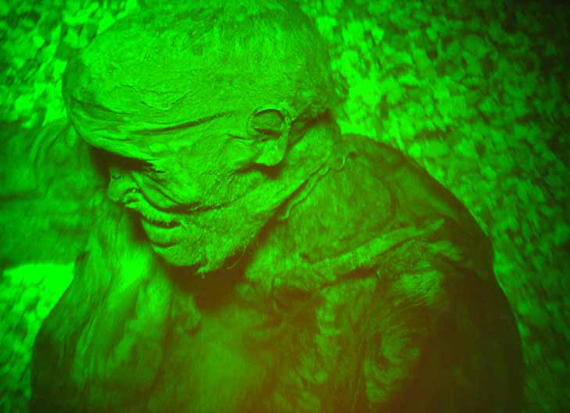 Lindow Man by Richmond Holographic Studios Ltd. Reflection hologram, glass. 12 in x 16 in. 1987. Green image showing the remains of a mummified, Iron Age man, dating to approximately 55BCE, found in a peat bog near Wilmslow, England in 1983.
Lindow Man by Richmond Holographic Studios Ltd. Reflection hologram, glass. 12 in x 16 in. 1987. Green image showing the remains of a mummified, Iron Age man, dating to approximately 55BCE, found in a peat bog near Wilmslow, England in 1983.
 Parc des Folies a la Villette by A. P. Holographie. White light transmission, film. 38 in x 40 in. Circa 1983. 3-D architect's model, produced to promote this science park in Paris; rainbow-colored image.
Parc des Folies a la Villette by A. P. Holographie. White light transmission, film. 38 in x 40 in. Circa 1983. 3-D architect's model, produced to promote this science park in Paris; rainbow-colored image.
Selections from the MIT Museum exhibit: Holography: The Light Fantastic, "an awe-inspiring sampling of twenty-three historic holograms from the MIT Museum holography collection—the world's largest. Scientific and artistic applications of holography in diverse fields such as medicine, engineering, and retailing as well as architecture, portraiture and abstract art are represented."
Here are some stunning images of the Seed Cathedral and UK Pavillion, designed by Thomas Heatherwick for the 2010 Shanghai World Expo.
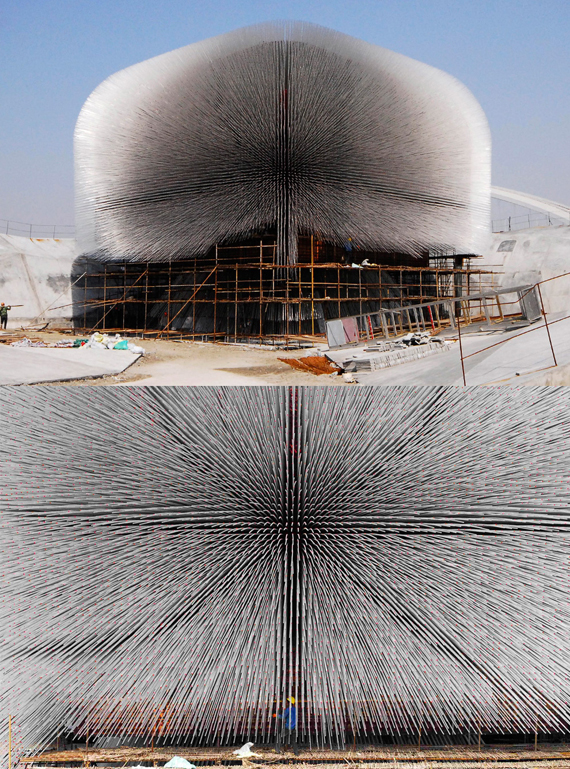



For two months in 1999, I lived in a Gond village 11 km from the town of Dantewara in what was then Madhya Pradesh, India (the next year, in 2000, the Gond region was bifurcated by the creation of the new state of Chhattisgarh). The Gond villagers had been struggling for fifty years to survive despite increasingly polluted water supplies, no schools, no hospitals. Through an organization called Dakshinayan I worked on an ashram with villagers to build new irrigational structures, repair deep groundwater pumps, facilitate literacy and empowerment women's groups, teach English and bring medical supplies to remote villages. Despite the short time I spent there and the great amount of the history and politics I did not know, it was obvious to me that the tiny amount of "development" funding that was allocated for projects such as mine was completely insufficient, and that the official channels open to the tribal people of India to protest and take control of their own land and the resources within it were never going to be sufficient to make meaningful changes in the direction of increased hunger, poverty and dislocation they were heading.
Thinking further about Arundhati Roy's amazing article Walking With the Comrades, published earlier this month, concerning the tribal resistance movement in central India, has generated in me a flood of recollections of the two months in 1999 I spent as a volunteer on a watershed development and social justice project in the area that is now a Maoist stronghold. In light of the continuing assaults on the people of this area by the Indian miltary and their plans for escalated violence, I wanted to post some pictures from the time I spent there of the people I met and the landscape so rich in minerals as to attract the most focused and violent attention of capitalist forces worldwide. The children I worked with and met would now be in their late teens and early twenties, and could very well be among the lists of rebels killed each day.
I have also posted a personal essay I wrote about my trip to central India in 1999, a few months after returning home to California. I was eighteen years old, and did not know of much of the political activity that was surely going on around me in Dantewada. This essay is essentially a distillation of the notes I took and sort of seismological recording of the personal impact that the project had on me. You can read the essay here.




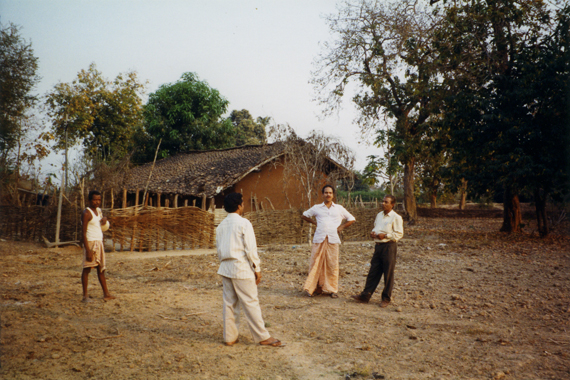







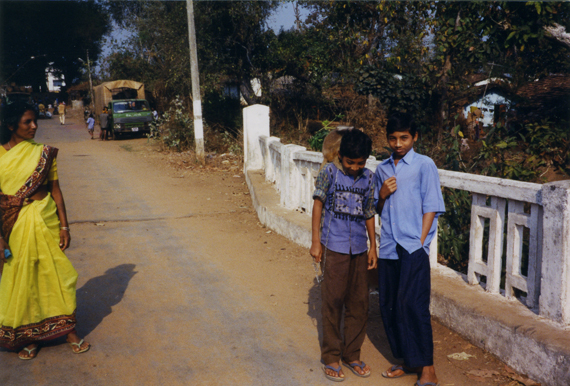








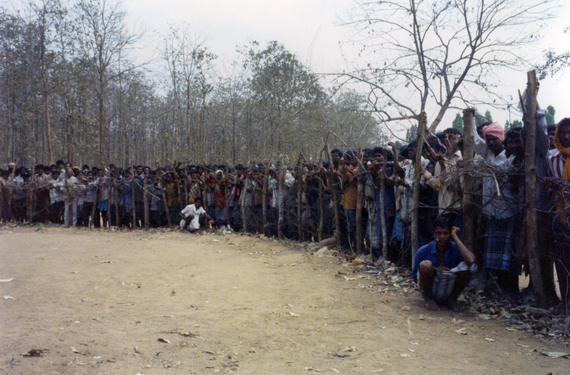
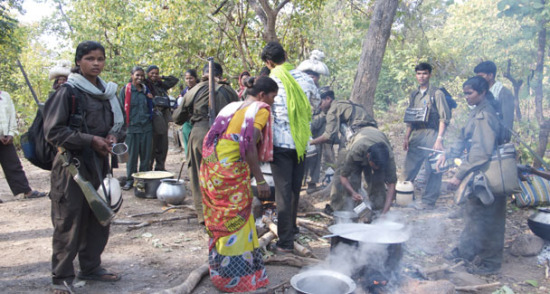 PLGA Militants (photo from dawn.com)
PLGA Militants (photo from dawn.com)
Having dispossessed them and pushed them into a downward spiral of indigence, in a cruel sleight of hand, the Government began to use their own penury against them. Each time it needed to displace a large population — for dams, irrigation projects, mines — it talked of "bringing tribals into the mainstream" or of giving them "the fruits of modern development". Of the tens of millions of internally displaced people (more than 30 million by big dams alone), refugees of India’s ‘progress’, the great majority are tribal people. When the Government begins to talk of tribal welfare, it’s time to worry.
— Arundhati Roy, Walking with the Comrades. March 21, 2010.
Last month Arundhati Roy broke the taboo of reporting directly on the Naxalite (Maoist) rebels in Central India. In the resulting articles and media appearances she has made, she has been attenmpting to draw attention to this struggle which is largely invisible and unreported in mainstream Indian media, to expose the hypocrisy of the joint corporate/government "relief" and "development" projects in the tribal areas of India. As the Isreali government announces that a re-occupation of Gaza is immanent, the Israeli military is training Indian "counter-terrorism" forces and supplying them with hi-tech weopenry to hunt down and destroy anyone who resists the destruction of the tribal culture, livelihoods and environment of central India. Please read Arundhati Roy's extremely well-researched, beautifully written and deeply troubling article, Walking with the Comrades from earlier this month here.
La pensée n'est qu'un ensemble complexe de micro-contractions musculaires ou micro-sensations musculaires. Et même si vous pensez un mot abstrait, ce n'est jamais que la micro-formation rapide et inconsciente de ce mot par les muscles linguaux qui constitue votre pensée même.
— Stefan Wul, Niourk (1957)
